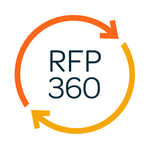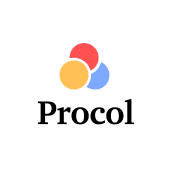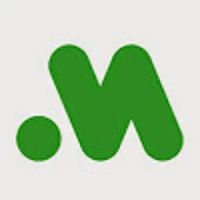Yes, procurement software can be accessed from various devices and platforms. Most current procurement software is cloud-based, which means it can be accessed via a web browser from any device, including desktops, laptops, tablets, and smartphones. Furthermore, several procurement software companies offer mobile apps, making it even easier to use the program on the go. This flexibility enhances procurement professionals' efficiency and accessibility.
List of 20 Best Procurement Software
Govly solution for seamless communication within the government supply chain. Our cutting-edge platform facilitates the secure exchange of crucial RF(x) data between OEMs and primes, streamlining information sharing for government contracts. Harness...Read More Govly
SCND is a service marketplace software designed to revolutionize the way businesses conduct service transactions online. With an extensive range of features, SCND empowers businesses to effortlessly connect with service providers and customers, promo...Read More SCND
Kkonnect.io solution to optimize your procurement process and increase cost savings for your business. Our comprehensive digital platform empowers you to efficiently handle RFQs, discover new suppliers, and effortlessly track POs. With Kkonnect.io, e...Read More Kkonnect.io
Basware is a leading purchase-to-pay and e-invoicing software designed for businesses of all sizes. Our comprehensive eProcurement solution enables cost savings, flexible payment terms, and increased efficiency. Take control of your finance and busin...Read More Basware
Prokuria is a and convenient cloud-based solution that simplifies sourcing, purchasing, and supplier management processes. With its customizable capabilities and user-friendly interface, Prokuria offers a cost-effective approach to automating procure...Read More Prokuria
ProcuMan is a e-procurement solution that streamlines supplier management, e-tendering, and approval processes. Powered by cutting-edge open-source technology and trusted Amazon Cloud security, ProcuMan offers a fully personalized and user-friendly p...Read More ProcuMan
RFP360 solution for seamless proposal management. Our cutting-edge AI technology streamlines the entire RFP process, resulting in collaborative and accurate proposals delivered in record time. Say farewell to manual tasks and welcome a more efficient...Read More RFP360
Bupros - a contract management solution that offers pre-set templates for efficient contract drafting. Our advanced reporting tools facilitate easy data analysis, while our catalog publication feature simplifies document organization. With customizab...Read More Bupros
ProcurePort is your go-to solution for managing procurement operations and enhancing supplier relationships. With its user-friendly interface and robust features, ProcurePort makes buying easier, more cost-effective, and efficient. Unleash the full p...Read More ProcurePort
Fraxion, the trusted procure-to-pay solution used by mid-sized businesses worldwide. Our software enables proactive spend management through efficient management of requisition-to-PO, expense, and approval processes. Streamline your AP workflow and g...Read More Fraxion
mespas R5, the innovative maritime software that revolutionizes procurement processes. With a 90% reduction in time for suppliers and 60% for ship managers, mespas R5 offers a seamless approach. Securely based on the cloud, this platform simplifies d...Read More mespas R5
SutiProcure is a online platform that automates and speeds up every stage of the procurement process, from purchasing to payment. It enables organizations to efficiently manage their purchasing needs and track their expenses. With SutiProcure, you ca...Read More SutiProcure
Xtuple is open source accounting software that caters to the needs of manufacturers and distributors worldwide. It offers a comprehensive solution for business management, combining essential features like sales, accounting, operations, and CRM in a...Read More Xtuple
Procurence Meercat solution for efficient supply chain management. Equipped with robust features for supplier management, risk reduction, and performance monitoring, Meercat streamlines procurement and facilitates collaboration. Its advanced capabili...Read More Procurence Meercat
Team Procure is a procurement software perfect for large businesses. Our cloud-based platform offers a centralized hub for all your procurement needs, including Dashboards, Requests, Warehouse management, Vendor management, Product tracking, Project...Read More Team Procure
Procol is procurement software perfect for large companies looking to reduce expenses. With the majority of spending happening offline, Procols system automates processes and reduces the need for manual involvement. This allows for efficient control...Read More Procol
Penny is a eProcurement solution that simplifies and streamlines your procurement process from start to finish. With Penny, managing requests and approvals is effortless, resulting in a smooth and efficient procurement cycle. Bid farewell to tedious...Read More Penny
GEP Smart is a, cloud-based sourcing and procurement platform that boasts seamless integration with touch and mobile devices. Developed by the renowned procurement solutions provider, GEP, this innovative software ensures an all-encompassing solution...Read More GEP Smart
Ivalua is a Source to Pay solution that revolutionizes procurement processes across all categories. Its modular design allows for easy customization and future scalability, ensuring a 98% annual renewal rate. With top-notch features for optimal effic...Read More Ivalua
SpendMap is a procurement software known for its reliability and 25+ years of experience in serving businesses. Our SaaS and on-premise solutions offer a wide range of features to simplify procurement processes, enhance spending management, and drive...Read More SpendMap
Learn More About Procurement Software
- What Is Procurement Software?
- What Are The Recent Trends In Procurement Software?
- Benefits Of Using Procurement Software
- Important Factors To Consider While Purchasing Procurement Software?
- What Are The Key Features To Look For In Procurement Software?
- Why Do Businesses Need Procurement Software?
- How Much Time Is Required To Implement Procurement Software?
- What Is The Level Of Customization Available In Procurement Software?
- Which Industries Can Benefit The Most From Procurement Software?
- Conclusion
What Is Procurement Software?
Procurement software, often known as eProcurement software, is a comprehensive technology solution that helps firms streamline and automate their purchase processes. It is intended to assist firms in managing their whole procurement lifecycle, from determining product requirements to payments and contract management. At its core, procurement software is a consolidated platform for storing and tracking purchase requests, estimates, orders, and invoicing.
It eliminates the need for manual, paper-based processes and enables the complete digitization of procurement operations. One of the primary advantages of procurement software is its capacity to automate and standardize purchasing activities, thereby ensuring adherence to organizational standards and procedures. It also gives openness and insight into all procurement activities, allowing for more informed decision-making and lowering the risk of fraud and errors.
In addition to its main functionality, procurement software frequently incorporates capabilities like supplier management, spend analytics, and contract management. These features assist organizations in achieving cost savings, negotiating better agreements with suppliers, and tracking their overall spending. Depending on the provider, procurement software may be available as a stand-alone platform or integrated with other enterprise resource planning (ERP) systems.
It may also be adjusted to certain sectors and company sizes, making it a flexible option for a variety of buying requirements. Businesses that engage in procurement software can save costs, increase productivity, and improve collaboration between departments and suppliers. It also makes it easier to manage and report on procurement KPIs, allowing for continual development and strategic decision-making.
When choosing procurement software, you must carefully analyze your organization's specific needs and goals. This will assist you in selecting the software that best fits your business procedures and budget. Furthermore, search for a reliable provider with a track record of successful deployments and excellent customer service to ensure a smooth transition and long-term benefit.
What Are The Recent Trends In Procurement Software?
In recent years, the procurement business has seen a considerable transition toward the use of digital procurement tools. This is due to the growing demand for effective and simplified procurement processes, as well as the proliferation of e-commerce and global sourcing. The use of artificial intelligence and machine learning is a prominent trend in procurement software nowadays.
These technologies can analyze massive amounts of data to detect patterns and trends, enabling more informed decision-making and automating routine processes. This saves time and lowers human mistake while also improving forecasting and budgeting accuracy. Another trend is the increase in cloud-based procurement systems. These provide the benefit of remote access and automated updates, allowing teams working in different places to cooperate and stay up to date.
Additionally, cloud-based software frequently includes customisable dashboards and real-time reporting, providing a comprehensive perspective of procurement activity. Mobile procurement apps are increasingly gaining popularity, enabling users to handle procurement operations while on the go. This is especially handy for personnel who are always on the road or for firms with a distributed workforce.
These apps usually include functionality like purchase order preparation and approval, contract management, and supplier communication. Furthermore, sustainability and ethical sourcing have become important factors for many businesses, therefore the demand for procurement software that can track and manage suppliers' environmental and ethical activities is increasing.Finally, there is an increasing desire for integrated procurement suites that include numerous capabilities like sourcing, contract administration, and invoice processing.
This streamlines and simplifies the procurement process by decreasing the need for various software systems and data duplication. As the procurement landscape evolves, firms must stay up to date on trends and select procurement software that can adapt and expand to meet their changing demands. Organizations may use the correct procurement software to improve efficiency, cut costs, and drive value for their overall procurement strategies.
Benefits Of Using Procurement Software
Procurement software is becoming an indispensable tool for firms of all kinds, enabling a more streamlined and effective purchase process. It eliminates laborious chores, tracks spending, and gives vital data to help you make better purchase decisions.
Let's explore, we'll go over the numerous advantages of using procurement software, so you can make an informed purchasing decision.
1. Increased Efficiency And Cost Savings: Using procurement software improves efficiency and reduces costs. It automates boring operations such as purchase orders and invoices, lowering the possibility of human error. This leads to faster processing and approvals, saving time and avoiding unnecessary expenses.
2. Centralized Purchasing: Procurement software allows firms to manage all of their purchasing processes in one location. This provides greater control and visibility over spending, lowering the risk of prohibited purchases and repeat orders.
3. Automated Compliance: Compliance with regulations and internal procedures is critical for firms. Procurement software automates compliance checks, ensuring that all purchases follow company policies and legal standards.
4. Real-Time Data And Analytics: Procurement software delivers real-time data and analytics, providing firms with important insights into their spending habits. This enables more informed decision-making, recognizing cost-saving options, and negotiating better supplier bargains.
5. Improved Supplier Management: Proper supplier management is critical to successful procurement. Procurement software enables firms to have a consolidated database of suppliers, monitor their performance, and negotiate better terms. It also helps to streamline communication and collaboration with suppliers, resulting in timely deliveries and positive connections.
6. Integration With ERP Systems: Most procurement software works easily with a company's existing ERP systems, resulting in a unified purchasing process. This integration improves data flow by eliminating the need for human data entry, which reduces the possibility of errors and delays.
7. Increased Transparency: Transparency is essential in the purchase process, particularly when dealing with sensitive information. Procurement software provides a thorough audit trail, allowing firms to be transparent about their purchases, approvals, and supplier management.
Important Factors To Consider While Purchasing Procurement Software?
When it comes to choosing procurement software for your business, there are several crucial elements to consider in order to make the best option for your company. These variables will affect not just the effectiveness and efficiency of your procurement process, but also the entire performance of your company.
To make an informed decision, here are some crucial considerations to consider when selecting procurement software:
1. Determine Your Needs: Before you begin analyzing various software options, it is critical to understand your organization's specific needs and objectives. This can help you determine the features and functionalities that are critical to your organization, saving you time and money in the long run.
2. Scalability: As your firm expands, so will your purchase requirements. It is critical to select software that can grow with your organization and meet your future needs. This eliminates the need for expensive and time-consuming software replacements in the future.
3. Integration: Procurement software should integrate effortlessly with your current systems, including finance, inventory, and supplier management. Consider compatibility and integration capabilities to prevent data silos and improve business procedures.
4. Customization Options: Each firm has its own procedures and methods. As a result, instead of a one-size-fits-all solution, choose software that allows for customization to meet your individual requirements.
5. User-Friendly Interface: Regardless of technical expertise, all employees should find the software's user interface simple and easy to use. This will ensure a seamless adoption and save training costs.
6. Security: Because procurement software stores sensitive data, the security features available must be carefully considered. To protect your information, look for software that supports role-based access, data encryption, and regular data backups.
7. Mobile Accessibility: In today's fast-paced company climate, having the ability to access procurement software while on the road is crucial. Look for software with mobile accessibility so you can oversee your purchase process from anywhere.
8. Customer Help: It is critical to select a software provider that provides dependable and prompt customer help in the event of any problems or concerns. Look for reviews and contact references to make an informed judgment regarding the provider's customer service.
9. Pricing: Procurement software costs might vary from a one-time purchase to monthly or annual subscriptions. Consider your budget as well as the amenities offered in the various pricing plans when deciding which is ideal for your organization.
10. Free Trial Or Demo: Before making a purchase, it is advisable to evaluate the product using a free trial or demo. This will allow you to test the features and assess whether they match your organization's requirements.
When choosing procurement software for your organization, consider these crucial considerations to make an informed decision. It is also recommended to include key stakeholders and decision-makers in the review process to ensure that the software meets your organization's goals and demands. With the appropriate procurement software, you can streamline your procedures, increase productivity, and save costs for your company.
What Are The Key Features To Look For In Procurement Software?
As technology advances, the procurement process has gotten more complex. Procurement software streamlines and simplifies the procurement process, allowing firms to better manage their sourcing and purchase activities. However, with so many software solutions on the market, it can be difficult for purchasers to evaluate which solution is best suited for their firm.
To help you make an informed decision, below are the main elements to consider while researching procurement software:
1. Automation And Customization: One of the primary benefits of procurement software is its ability to automate manual and repetitive operations. Look for software that provides customizable workflows and automated processes to help you streamline approvals, purchase orders, and other procurement tasks. This not only saves time and avoids human error, but it also enables a more personalized and efficient buying process.
2. Centralized Data Management: An successful procurement software should be able to consolidate all data related to sourcing, suppliers, and contracts. This means that all documents, including supplier contracts, purchase orders, and invoices, may be saved in one location. A unified system allows users to readily access and evaluate data, making it easier to track costs, monitor supplier performance, and make data-driven choices.
3. Supplier Management: Proper supplier management is critical to successful procurement. Look for software that has options for managing supplier information, such as contact information, contracts, and performance reviews. This will help you maintain a positive relationship with your suppliers, assuring timely delivery of goods and services.
4. Analysis And Reporting: Effective procurement software should provide full analytics and reporting features. This enables customers to obtain insight into their procurement spending, uncover cost-cutting options, and track supplier performance. Look for software that has real-time dashboards, customisable reports, and data visualization capabilities to help you make better decisions.
5. Integration & Compatibility: Accounting software, ERP systems, and e-commerce platforms should all work together seamlessly with procurement software. This promotes more effective data transfer, reduces redundant data entry, and ensures accurate financial reporting. Also, check sure the program is compatible with your current IT infrastructure to avoid any technical complications.
6. User-Friendly Interface: A user-friendly interface is required for any software to function well. Look for procurement software that is simple to use, with a modern and visually appealing design. This will boost user adoption, improve efficiency, and cut training time and expenses.
Why Do Businesses Need Procurement Software?
Businesses require procurement software to streamline and optimize their purchasing processes, which range from supplier sourcing and contract negotiation to inventory management and invoice payment. This sort of software offers firms a consolidated platform for managing their procurement processes, resulting in enhanced efficiency, cost savings, and better decision-making.
One of the primary reasons why firms want procurement software is to achieve cost reductions. Businesses that automate and digitize procurement procedures can cut administrative expenses, eliminate manual errors, and negotiate better pricing with suppliers. This can result in significant long-term cost savings, making the investment in procurement software worthwhile. Procurement software also helps organizations enhance their inventory management.
Businesses with real-time access into inventory levels can minimize stockouts and overstocking, minimizing waste and increasing profitability. Businesses that manage inventory levels and supplier performance can make better judgments about when and how much to order, resulting in increased supply chain efficiency. Furthermore, procurement software enables firms to optimize their supplier management operations.
From keeping a consolidated supplier database to monitoring supplier performance and compliance, organizations can effortlessly manage their supplier relationships and guarantee they are following contractual responsibilities. This can lead to stronger supplier relationships and higher product/service quality. Furthermore, procurement software has data analytics and reporting capabilities, which provide useful insights into procurement costs and supplier performance.
Businesses that analyze this data can uncover cost-saving opportunities, measure procurement KPIs, and make data-driven decisions to improve their overall procurement strategy. Finally, given the increasing importance of sustainability, procurement software may assist firms in their sustainability initiatives. Businesses can lessen their environmental effect and be socially responsible by tracking supplier sustainability practices and implementing sustainable factors into procurement decisions.
How Much Time Is Required To Implement Procurement Software?
The time required to develop procurement software varies according to the system's complexity and your organization's specific requirements. On average, it takes 3-6 months to completely integrate a procurement software solution. However, it is important to recognize that implementing procurement software is a continuous process rather than a one-time occurrence. Continuous monitoring, updating, and training are required to ensure its efficient use and integration into your procurement operations.Data migration, customisation, system testing, and user training are all tasks that will take up time during the implementation process.
These are critical measures to verify that the software fulfills your business needs and integrates seamlessly with your existing systems. It is also critical to include all major players in the implementation process, such as procurement personnel, the IT department, and end users.This will contribute to a smooth transition and increased user adoption of the new system.
Some procurement software suppliers may give implementation services, while others may need you to manage the process yourself. To have a clear knowledge of what to expect, you must first discuss the implementation timeframe and procedure with your chosen vendor. In some circumstances, you may be able to use the program while it is being implemented, especially if it is cloud-based. This can help to reduce disruptions to your procurement activities and guarantee a smoother transition to the new system.
What Is The Level Of Customization Available In Procurement Software?
Procurement software is a useful tool for organizations to improve their purchase process, manage supplier relationships, and cut costs. One of the primary benefits of using procurement software is the degree of customization it allows. Companies can improve their procurement processes by tailoring the software to unique company demands. The extent of customisation in procurement software varies by product.
Some software solutions provide a variety of pre-built templates and forms that firms can tailor to their own needs. These templates often cover all components of the procurement process, including purchase orders and supplier contracts. This makes it simple for businesses to swiftly adopt the program and begin using it to its full capacity.
More complex procurement software, on the other hand, offers capabilities like custom fields and workflows that allow for greater customisation. This allows organizations to design tailored forms and processes that meet their specific procurement needs. For example, a corporation may demand additional fields to contain specialized product details or clearances from different departments prior to making a transaction.
They may easily set up these workflows within the program thanks to its customization possibilities. In addition to customizing forms and procedures, firms may tailor their procurement software by specifying user roles and permissions. This provides greater control and security, ensuring that only authorized workers have access to sensitive purchase information.
Another aspect of procurement software customisation is its compatibility with other systems and software. This is especially relevant for firms that already use enterprise resource planning (ERP) or accounting systems. The software should be able to connect easily with these systems, allowing for a smooth data transmission while lowering the possibility of errors.
Which Industries Can Benefit The Most From Procurement Software?
Procurement software is an important tool for businesses across industries. It simplifies the procurement process, from selecting suppliers to evaluating spending data, ultimately saving enterprises time and money. Whether you manage a little firm or a major enterprise, integrating procurement software can significantly improve your bottom line.
Let's explore, we'll look at which industries can most benefit from procurement software.
1. Manufacturing: Manufacturing organizations' procurement processes are complex, involving various vendors, materials, and production schedules. Manufacturers can use procurement software to organize their purchasing operations, track inventory levels, and negotiate better agreements with suppliers. It also delivers real-time insights into spending trends, allowing organizations to make data-driven decisions and reduce costs.
2. Construction: The construction industry relies largely on timely material delivery to complete projects on time. Procurement software may assist construction companies optimize their supply chain management, ensuring goods arrive on time and at the cheapest price. It also makes it easier to track subcontractor contracts and payments, lowering the risk of project delays caused by supplier difficulties.
3. Healthcare: Healthcare companies have tight standards and procedures for purchasing medical supplies and equipment. Hospitals and other healthcare facilities can use procurement software to comply with these laws while enhancing cost control. It improves insight into medical supply spending, identifies cost-saving options, and guarantees that critical supplies are delivered on schedule.
4. Retail: Retailers frequently struggle to manage their vast and diverse supply network. Retailers can use procurement software to automate their procurement procedures, from purchase order creation to invoice reconciliation, which reduces the need for manual data entry. It also allows businesses to monitor their stock levels and negotiate better rates with suppliers, resulting in higher margins.
5. Technology :Technology businesses frequently face significant demand for raw materials and components to build their products. Procurement software can assist these organizations in streamlining their supply chain, obtaining the cheapest pricing, and ensuring that crucial components arrive on time. It also makes it easier to track supplier performance, allowing firms to identify and rectify any concerns as soon as possible.
Conclusion
Finally, investing in powerful procurement software can tremendously benefit your firm by reducing costs, increasing efficiency, and improving supplier relationships. When looking for the best procurement software, you should examine your specific requirements, budget, and available resources. The software's capabilities, functionality, and compatibility with your existing systems should all be carefully reviewed.
We recommend completing extensive research, reading reviews, and getting demos from various providers to ensure you make an informed conclusion. Furthermore, incorporating key stakeholders and users in the selection process can help guarantee that the software satisfies the requirements of all departments. It is also crucial to consider scalability and future improvements as your firm develops and expands.
Choose software that is adaptable to your changing demands and works well with other tools in your technology stack. Finally, the correct procurement software will not only streamline your operations and reduce costs, but will also improve visibility, compliance, and overall business efficiency. With careful analysis and investigation, you can find the ideal solution to fulfill your company's procurement requirements. We wish you the best of luck on your procurement software journey.
Procurement Software FAQ's
Can Procurement Software Be Accessed Across Multiple Devices And Platforms?
Is Procurement Software Future-Proof And Adaptable To Emerging Technologies Like AI, Blockchain Or IoT?
Procurement software is continuously evolving and adapting to new technologies such as artificial intelligence, blockchain, and the Internet of Things. These technologies enhance procurement software's ability to automate operations, increase data accuracy, and optimize decision-making.
Procurement software, with its flexibility to interact with numerous systems and APIs, is future-proof and adaptable to emerging technologies, making it a useful investment for firms looking to keep ahead of the fast changing business landscape.
Is There A Free Trial Offered to Assess Procurement Software Before Committing?
Yes, many procurement software vendors provide a free trial period in which prospective users can evaluate the product before committing to a paying membership. This allows you to test the software's features and functionalities and assess whether it is a good fit for your organization. Make use of the free trial offer to make an informed decision.
Does Procurement Software Offer Data Security Features And Meet Regulatory Compliance Standards?
Yes, procurement software includes strong data security measures that safeguard the confidentiality, integrity, and availability of sensitive information. It uses encryption techniques, safe data storage, and access controls to prevent data breaches.
Furthermore, it complies to industry-specific regulatory compliance standards such as GDPR, HIPAA, and PCI-DSS to assure data security and processing. This ensures that firms may undertake procurement processes safely and confidently, without jeopardizing security or breaking regulations.
Can Procurement Software Integrate Seamlessly With Existing Tools And Platforms?
Yes, procurement software is intended to work seamlessly alongside existing tools and platforms. It can work with existing ERPs, CRMs, and other systems to simplify the procurement process and increase data accuracy. This guarantees that all departments are on the same page and enables effective communication and collaboration across several platforms. Furthermore, most procurement software provides flexible integration options to match the unique requirements of each firm.






















